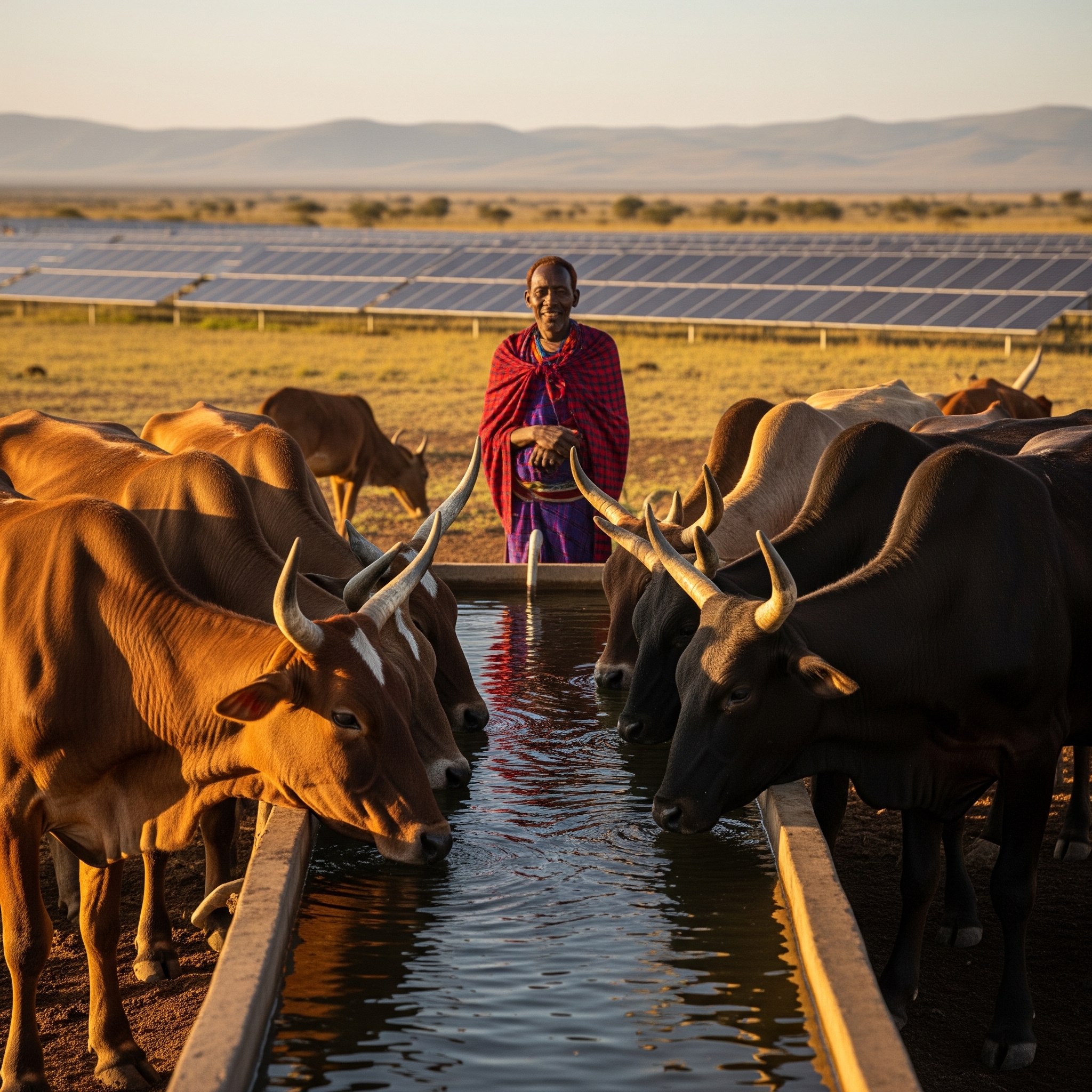Project Overview:
- Location: Samburu County, Kenya
- Partners: Local County Government, Community Leaders
- Core Challenge: Chronic water scarcity in an arid region, exacerbated by climate change.
- WASHLAB Solution: Integrated Solar-Powered Water System with IoT Monitoring and Community Management.Integrated Solar-Powered Water System with IoT Monitoring and Community Management.
- Impact: Uninterrupted safe water for over 3,000 people, enhanced climate resilience, and sustainable local ownership.
In Samburu County, Kenya, WASHLAB deployed a solar-powered water supply system with remote IoT monitoring. Serving over 3,000 people, this climate-smart solution now ensures uninterrupted safe water access—even in the dry season. Equally important, community members were trained to maintain the system, guaranteeing local ownership and long-term impact.
- The Challenge: A Community on the Brink Samburu County, a region characterized by its arid and semi-arid landscapes, faces a persistent water crisis. For generations, communities have grappled with unreliable and often unsafe water sources, a challenge intensified by increasingly frequent and severe droughts. The burden of water collection falls disproportionately on women and girls, who spend hours each day on arduous journeys, limiting their opportunities for education and economic advancement. The need was not just for water, but for a reliable, climate-proof solution that could function sustainably in a resource-scarce environment.
- The solution: An Integrated Engineering and Technology Approach In partnership with local leaders, WASHLAB designed and implemented a comprehensive solution that addressed the challenge from multiple angles. The core of the project was the deployment of a robust, solar-powered water supply system. This approach harnessed the region's most abundant resource—sunlight—to power boreholes, ensuring a continuous flow of water without reliance on a costly or unreliable electrical grid or diesel generators.?Crucially, we integrated a layer of smart technology. The system was equipped with remote IoT monitoring sensors, allowing our team and local operators to track water flow, pump performance, and system health in real-time. This digital oversight transforms the infrastructure from a passive asset into an intelligent network, enabling predictive maintenance that preempts costly breakdowns and ensures system uptime.The final, and most critical, component was community empowerment. Recognizing that technology and infrastructure are only as good as the systems in place to manage them, we conducted intensive training for a cohort of community members. These newly skilled technicians are now equipped to operate, maintain, and manage the water network, embedding local ownership and guaranteeing the long-term sustainability of the investment. 1
- The impact: A Sustainable Flow of Opportunity The Samburu Solar Water Network now provides a continuous, reliable supply of safe drinking water to over 3,000 people, transforming public health and daily life. The system's resilience has been proven, delivering uninterrupted access even during the dry season. The social impact has been profound. With water readily accessible, women and girls are freed from the daily burden of collection, opening up new possibilities for education, income-generating activities, and community leadership. By building local technical and managerial capacity, the project has not only delivered water but has also created a sustainable, community-owned utility that will serve Samburu for generations to come.









